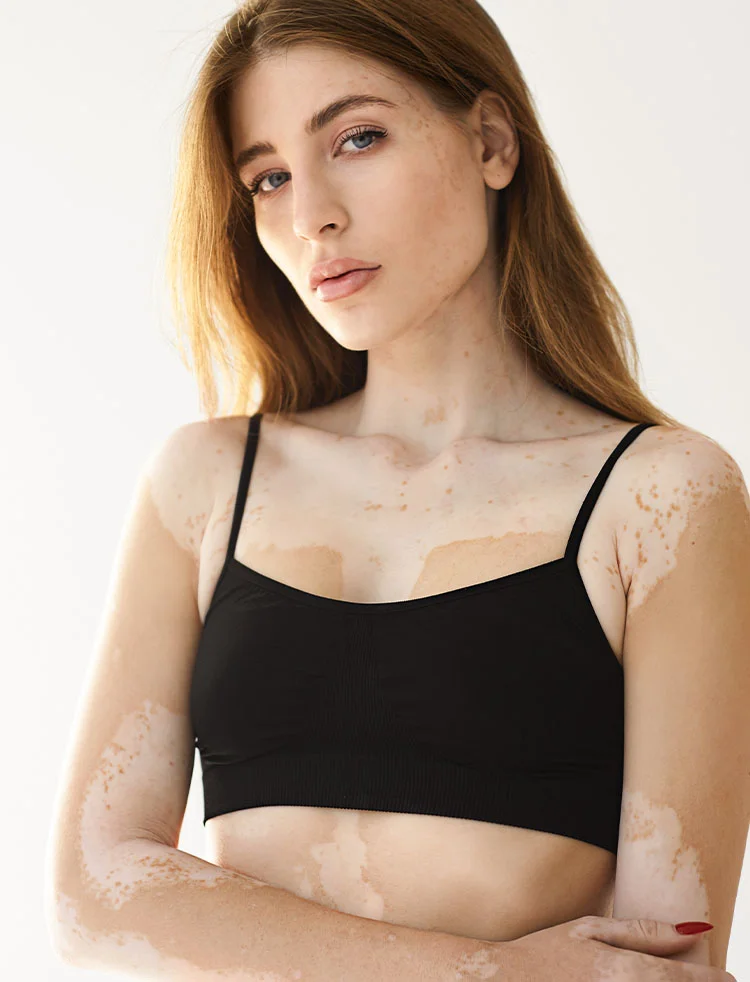What causes Vitiligo?
The exact cause of vitiligo is not fully understood, but it is thought to be related to a combination of genetics, immune system dysfunction, and environmental factors.
Some research suggests that vitiligo may be caused by an autoimmune response, in which the immune system attacks and destroys pigment cells in the skin. This theory is supported by the fact that people with certain autoimmune conditions, such as thyroid disease and diabetes, are more likely to develop vitiligo.
There is also evidence to suggest that genetics play a role in the development of vitiligo. If a family member has vitiligo, it is more likely that other family members will also develop the condition. Certain environmental factors, such as sun exposure and chemical exposure, may also contribute to the development of vitiligo. It is not clear how these factors may contribute to the condition, but they may trigger the autoimmune response or damage pigment cells in the skin.
What are the Vitiligo treatment Options?
There is no cure for vitiligo, but there are treatments available that can help to restore pigment to the affected areas. These treatments may include topical medications, phototherapy, and skin grafts. The best treatment option for an individual will depend on the severity and location of the vitiligo, as well as the person’s age and overall health.
The best treatment option for an individual with vitiligo will depend on the severity and location of the condition, as well as the person’s age and overall health. Some common treatments for vitiligo include:
- Topical medications: These medications are applied directly to the skin and can help to stimulate the production of pigment cells. Examples of topical medications include corticosteroids, calcineurin inhibitors, vitamin D analogues, and JAK inhibitors.
- Phototherapy: This treatment involves exposing the affected areas of the skin to controlled doses of UV light. Phototherapy can help to stimulate the production of pigment cells and may be used in combination with topical medications.
- Skin grafts: In this procedure, a small piece of skin from a healthy area of the body is transplanted to the affected area. Skin grafts can be used to restore pigment to large or difficult-to-treat areas of vitiligo.
- Depigmentation: This treatment involves using a topical medication to lighten the skin on the unaffected areas of the body so that it is more closely matched to the affected areas. Depigmentation is typically reserved for cases of widespread vitiligo that cannot be treated with other methods.
- XTRAC: The XTRAC laser is a state-of-the-art medical laser in New Jersey designed to revolutionize the treatment of challenging skin conditions like vitiligo. FDA-approved, this innovative laser therapy utilizes targeted ultraviolet B (UVB) light to address affected skin areas precisely.
It is important to seek medical attention if you suspect you may have vitiligo. A dermatologist can diagnose the condition and recommend a treatment plan. While vitiligo may be a visible condition, it does not affect a person’s overall health and should not limit one’s ability to lead a normal, active lifestyle.
Why choose us?
Why choose
Geria Dermatology?
Our founder, Aanand N. Geria, MD FAAD is a board-certified dermatologist specializing in medical, surgical, and cosmetic dermatology. Dr. Geria is a Fellow of the American Academy of Dermatology (AAD), a Diplomate of the American Board of Dermatology (ABD), a member of the American Society of Dermatologic Surgery (ASDS), New Jersey Dermatological Society (DSNJ), and Skin of Color Society., and has frequently made the Castle Connolly “Top Doctors” list since 2018.
Our Dermatologists and talented team of clinicians have undergone extensive training and developed the necessary skills to treat patients of all backgrounds. Our goal is to exceed our patients’ expectations while establishing ourselves as the premier vitiligo treatment practice in the New Jersey area.


Contact us
Dedicated To Exceptional Services
If you are interested in minimizing the appearance and arresting the progress of your vitiligo, do get in touch with us at Geria Dermatology in New Jersey. Please fill out the scheduling form below or call our office directly and a helpful member of our team will be able to assist you. This is just the beginning of an honest collaboration towards achieving your goals.
